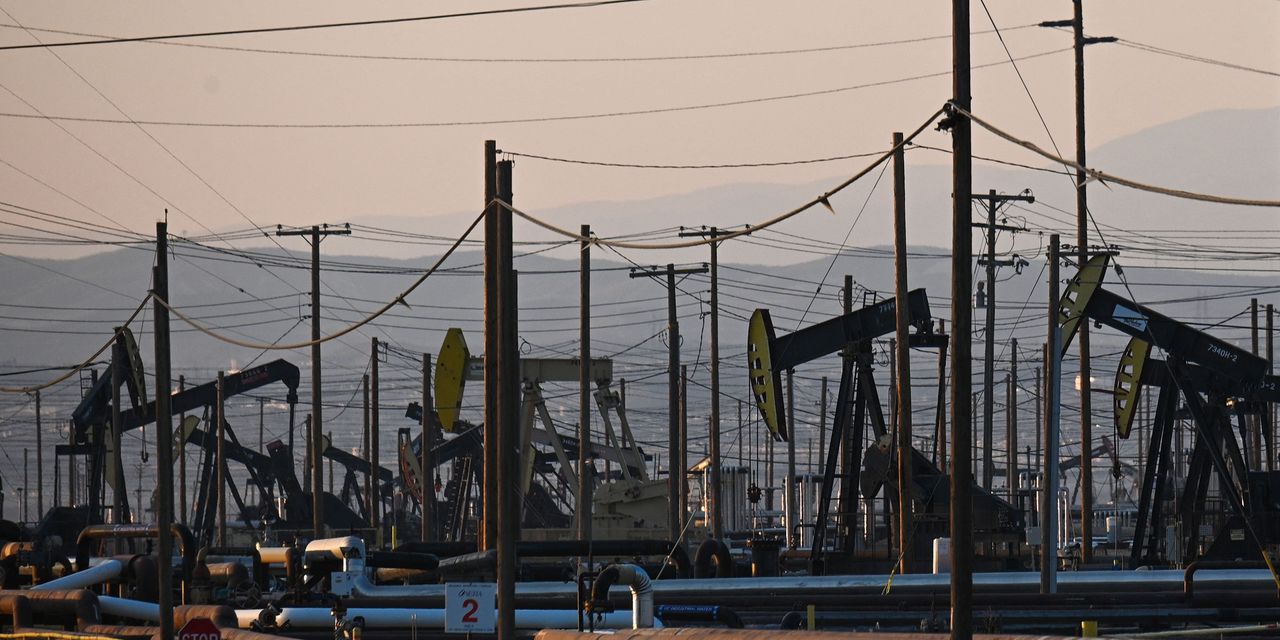Oil futures climbed Tuesday, with expectations that output cuts by major producers will lead to a global crude supply shortfall in the fourth quarter prompting prices for the commodity to settle fresh highs for the year.
Traders also awaited further hints on the outlook for global energy demand, with a reading on U.S. inflation and a European central bank decision on interest rates due out this week.
Price action
-
The front-month October West Texas intermediate contract
CL.1,
+1.99% CLV23,
+1.99%
rose $1.55, or 1.8%, to settle at $88.84 a barrel on the New York Mercantile Exchange. That was the highest front-month contract finish since Nov. 11, according to Dow Jones Market Data. -
November Brent crude
BRN00,
+1.97% BRNX23,
+1.97% ,
the global benchmark, gained $1.42, or 1.6%, to $92.06 a barrel on ICE Futures Europe, the highest since Nov. 16. -
Gasoline for October delivery
RBV23,
+0.25%
settled at $2.73 a gallon, up 0.3%, while October heating oil
HOV23,
+1.87%
fell by 1% to $3.33 a gallon. -
October natural gas
NGV23,
+1.75%
rose by 5.2% to $2.74 per million British thermal units.
Market drivers
A rally in oil prices driven by supply cuts by Saudi Arabia and Russia has lifted U.S. and global benchmark crude prices to levels they haven’t seen since November.
On Tuesday, the Organization of the Petroleum Exporting Countries left its predictions for the global oil market largely unchanged, forecasting demand growth of 2.4 million barrels a day for 2023 and 2.2 million barrels a day for 2024, with both unchanged from the previous month’s report.
Still, OPEC’s analysis shows that if the group of producers maintains its August production level of 27.45 million barrels a day through the end of the year, the global oil market will be over 3 million barrels a day in deficit in the fourth quarter, Herman Wang, chief OPEC correspondent for S&P Global Commodity Insights said on X Tuesday.
A supply deficit of 3.3 million barrels a day over the next three months would be 1 million barrels per day more than some energy traders were anticipating, said Edward Moya, senior market analyst at OANDA, in a note Tuesday.
The oil market could get even tighter if the economic data starts to improve for Europe or China, “which means we could easily see Brent crude make a run towards the $100-a-barrel level,” Moya said.
A global oil market supply shortfall of more than 3 million barrels a day next quarter would potentially be the biggest deficit in more than a decade, according to Bloomberg.
OPEC appears to believe that last year’s release of oil from the U.S. Strategic Petroleum Reserve and European Union price caps on Russia seaborne oil “distorted the market and thinks we need to rebuild spare [production] capacity and encourage investment,” Phil Flynn, senior market analyst at The Price Futures Group, told MarketWatch.
Some oil experts had expected a global supply deficit to be filled by U.S. production, he said. “But that did not happen because low prices and regulatory uncertainty caused a drop in rig counts and investment.”
In a separate monthly report also released Tuesday, the Energy Information Administration raised its 2023 and 2024 price forecasts U.S. and global benchmark oil. It also expects oil inventories to fall through the end of this year following Saudi Arabia’s decision to extend its voluntary production cut through December.
The EIA will release its weekly U.S. petroleum supply report on Wednesday. A monthly oil report from the International Energy Agency is also due out Wednesday.
Natural-gas futures, meanwhile, climbed by more than 5% Tuesday. “Early production estimates are showing weaker volumes out of the Permian Basin amid scheduled regional pipeline maintenance, said Victoria Dircksen, commodity analyst at Schneider Electric. “The drop in production is expected to be temporary but may give a boost to prices in the short term,” she wrote in a daily note.
Read the full article here













Leave a Reply